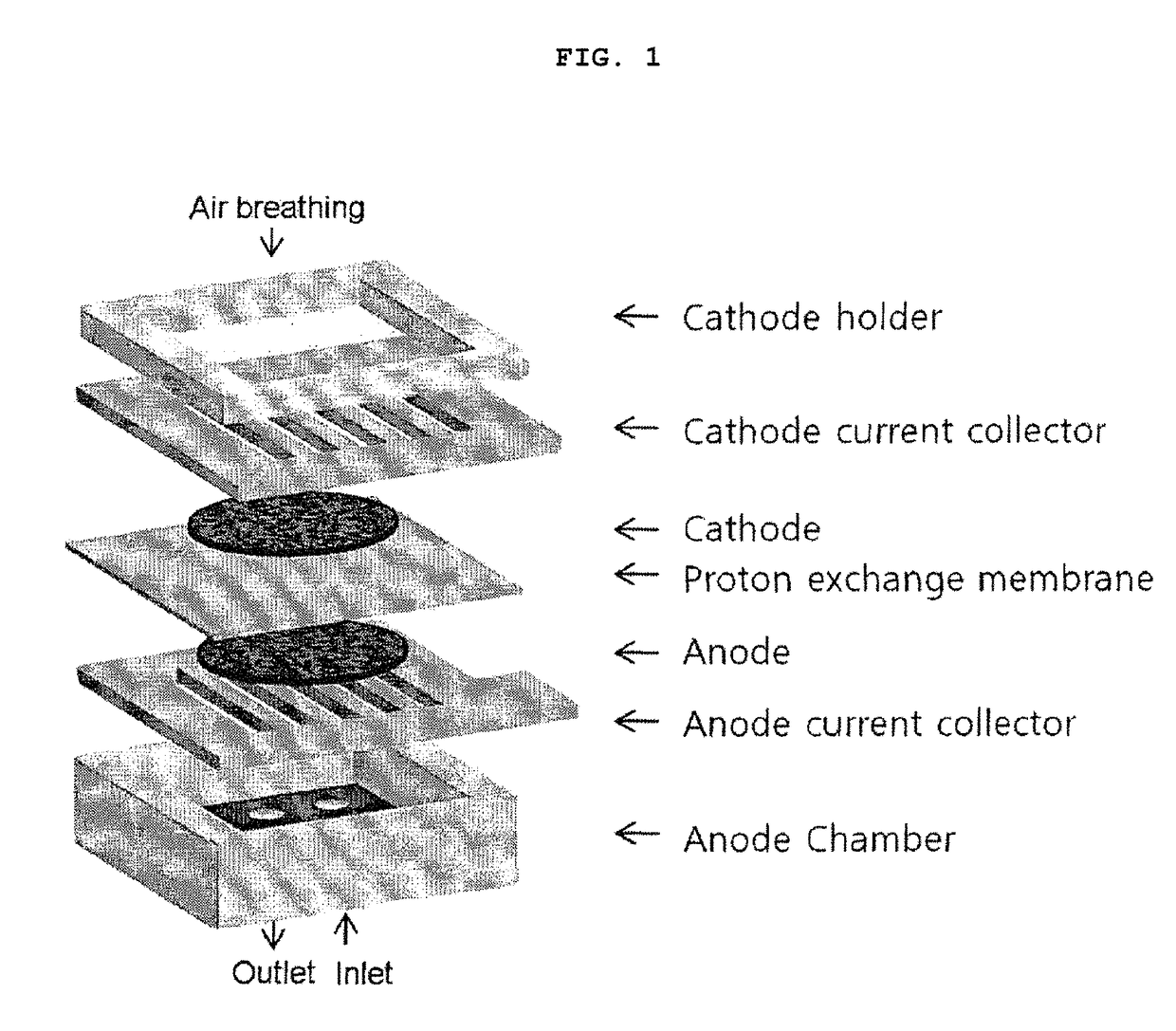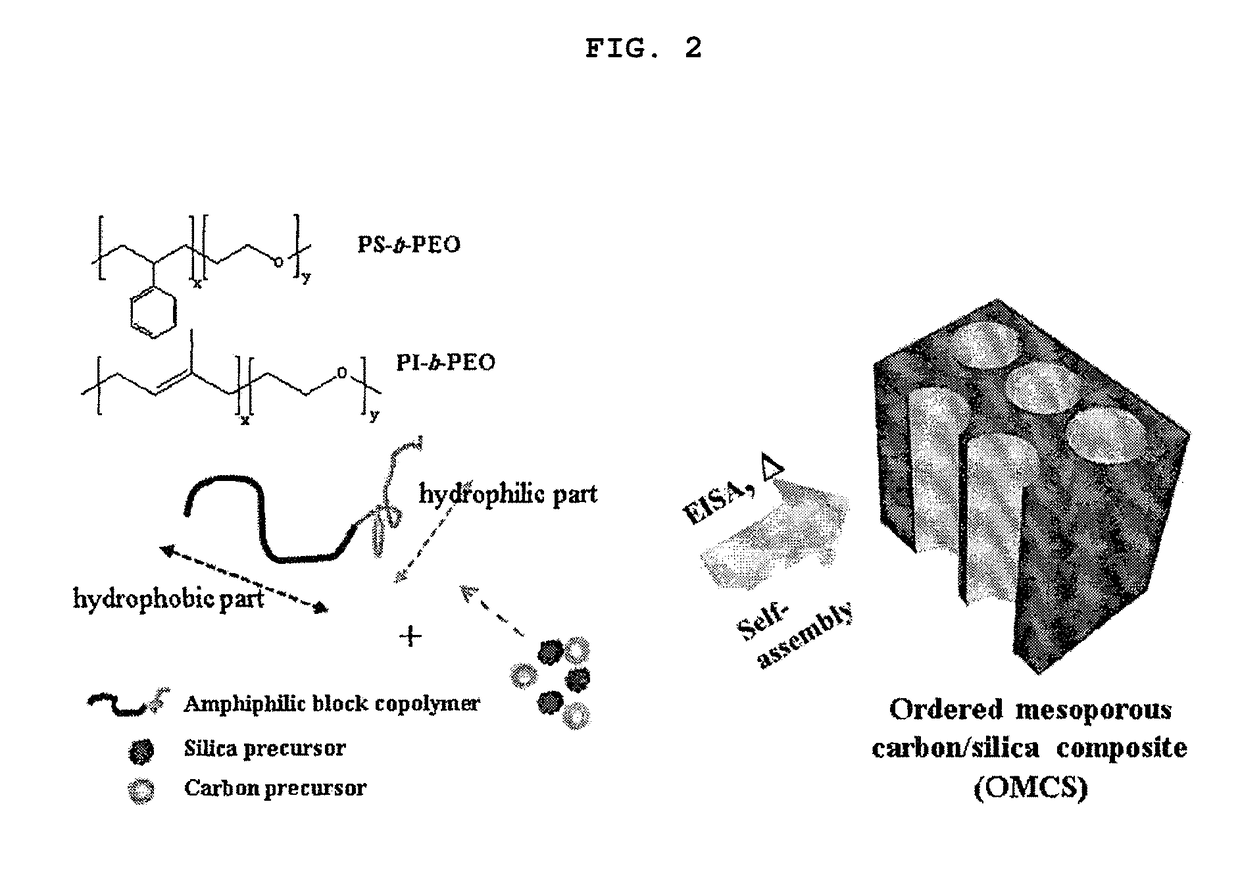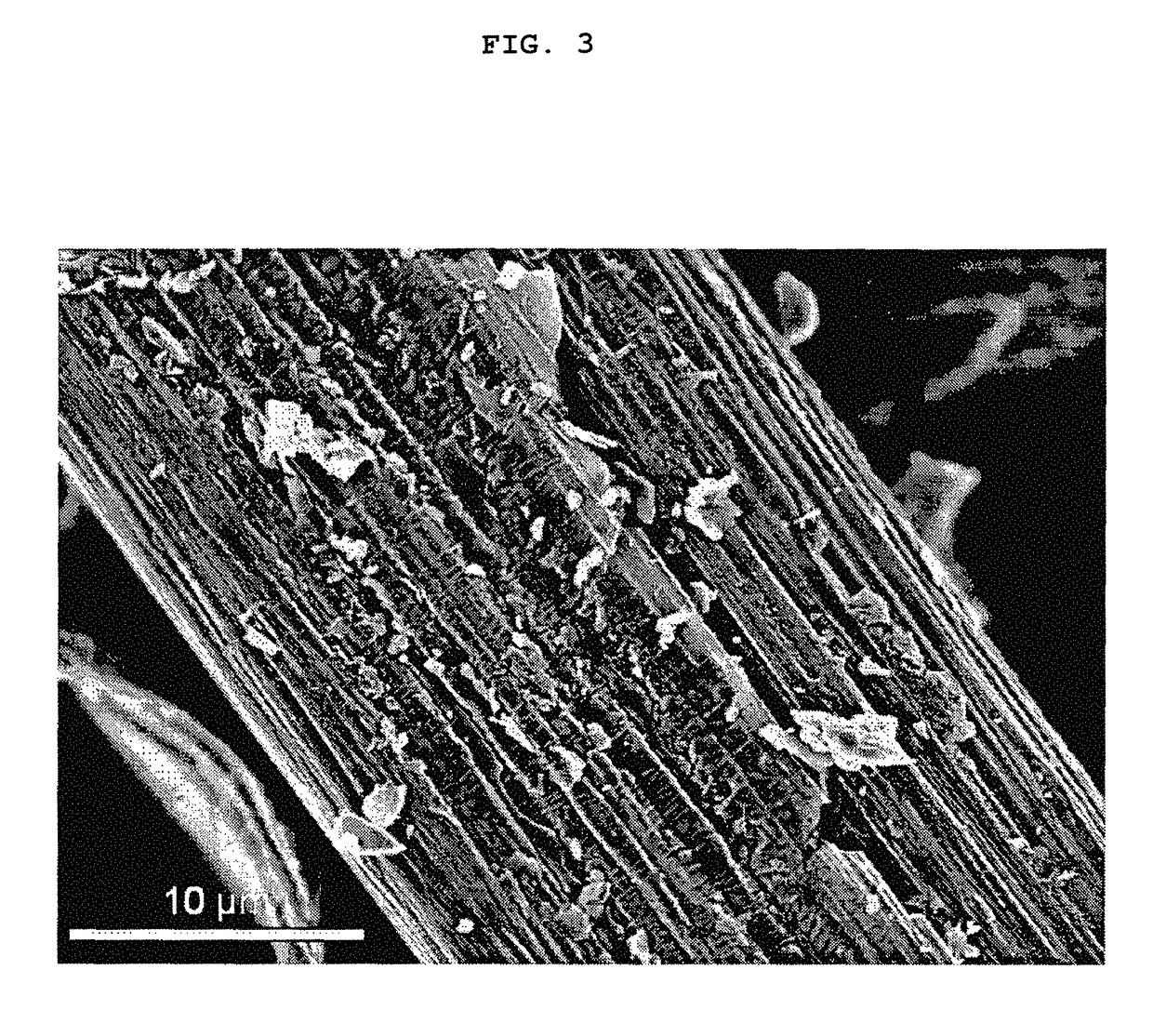Manufacturing method for catalyst electrode, catalyst electrode manufactured by means of method, and battery comprising same
a manufacturing method and catalyst electrode technology, applied in the field of catalytic electrode preparation, can solve the problems of slow enzymatic activity, difficult for the electron generated in the enzyme electrode by the nafion membrane to reach directly a current collector, and inability to uniformly disperse enzymes, etc., to achieve excellent physical properties, high power density, and high electron transfer efficiency
- Summary
- Abstract
- Description
- Claims
- Application Information
AI Technical Summary
Benefits of technology
Problems solved by technology
Method used
Image
Examples
preparation example 1
/ Silica Composite (OMCS) Having Continuous Pores and Carbon (OMC)
[0095]According to a method as shown in FIG. 2, a carbon / silica composite (OMCS) having continuous pores was prepared. Specifically, polystyrene-b-poly(ethylene oxide) (PSb-PEO) that is an amphiphilic block copolymer represented by the following formula 1 was used as a structure directing agent for forming continuous pores in the composite and dissolved in the organic solvent chloroform. 15 g of the amphiphilic block copolymer was mixed with 6 ml of chloroform.
[0096]The total molecular weight of the amphiphilic block copolymer used was 29,000, the molecular weight of the polyethylene oxide (PEO) was 5000 (17.2%), the PDI (polydispersity index) was 1.09, and the molar ratio of the monomers was PS:PEO=0.64:0.36.
[0097]
wherein x is 203, and y is 113.
[0098]Then, a silica precursor (TEOS, 0.426 ml), 0.1 M HCl (0.045 ml) and 0.22 g of a carbon precursor represented by the following formula 2 were sequentially added to chlorof...
preparation example 2
Paper (CP), OMCS-CP and OMC-CP Coated with OMCS and OMC Having Continuous Pores
[0103]Polystyrene-b-poly(ethylene oxide) (PS-b-PEO) that is an amphiphilic block copolymer represented by Formula 1 as described in Preparation Example 1 was used as a structure directing agent for forming continuous pores in the composite and dissolved in the organic solvent chloroform. 0.15 g of the amphiphilic block copolymer was mixed with 6 ml of chloroform.
[0104]The total molecular weight of the amphiphilic block copolymer used was 29,000, the molecular weight of the polyethylene oxide (PEO) was 5000 (17.2%), the PDI (polydispersity index) was 1.09, and the molar ratio of the monomers was PS:PEO=0.64:0.36. A carbon paper electrode (CP) (Fuel Cell Store, San Diego, Calif., USA) having a thickness of 370 μm and an area of 0.332 cm2 was used.
[0105]Then, a silica precursor (TEOS, 0.426 ml), 0.1 M HCl (0.045 ml) and 0.22 g of the carbon precursor represented by formula 2 were sequentially added to chloro...
example 1
on of ADS-GOx / OMCS-CP Electrode
[0107]Carbon paper (see FIG. 3) was immersed in the precursor mixture solution (OMCS precursor solution) prepared in Preparation Example 2. A carbon paper electrode (CP) (Fuel Cell Store, San Diego, Calif., USA) having a thickness of 370 μm and an area of 0.332 cm2 was used. After the solvent was evaporated at room temperature, the same procedure was repeated once more, whereby the space between the carbon fibers of the carbon paper was filled again with the OMCS precursor solution. The organic solvent was evaporated by the EISA process while the OMCS precursor material was coated on the surface of the carbon fibers. Then, the resulting material was subjected to a calcining process in the same manner as described in Preparation Example 1, thereby fabricating carbon fibers (OMCS-CP) filled / coated with the carbon / silica composite. FIG. 4 is a SEM photograph of OMCS—CP, and the right photographs of FIG. 4 are enlarged photographs of OMCS-CP. As can be see...
PUM
| Property | Measurement | Unit |
|---|---|---|
| diameters | aaaaa | aaaaa |
| size | aaaaa | aaaaa |
| size | aaaaa | aaaaa |
Abstract
Description
Claims
Application Information
 Login to View More
Login to View More - R&D
- Intellectual Property
- Life Sciences
- Materials
- Tech Scout
- Unparalleled Data Quality
- Higher Quality Content
- 60% Fewer Hallucinations
Browse by: Latest US Patents, China's latest patents, Technical Efficacy Thesaurus, Application Domain, Technology Topic, Popular Technical Reports.
© 2025 PatSnap. All rights reserved.Legal|Privacy policy|Modern Slavery Act Transparency Statement|Sitemap|About US| Contact US: help@patsnap.com



